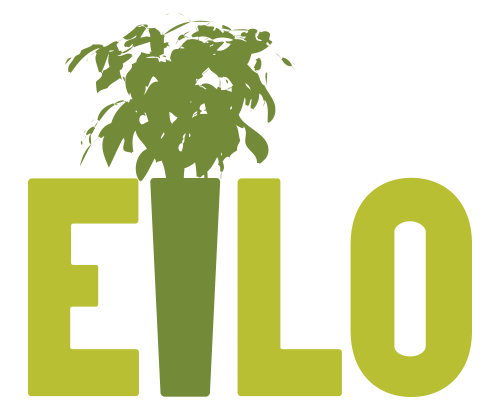Innovate, inspire and learn to develop new markets
The excursion started on Thursday 5 March, 6 p.m., with a number of speakers who, not surprisingly, all talked about the same subject: ‘interior landscaper, get out of your comfort zone and innovate, use inspiration as your primary marketing tool, approach new kinds of clients and be very aware of trends.’
Reto Hafner of Officelabs spoke about the office world going ‘on walkabout’ (in German: am Wandel) and that the move of working in a cubicle to an open-space office is now a thing of the past, since offices are relocated to our living rooms in this age of the sharing economy. He also indicated there is a trend towards lean economy (das Büro ist kein Wohlfühl Oase), yet at the same time more research is carried out and awareness developed that plants have a positive psychological effect on people. He called upon the interior landscapers to act on these trends more actively.
Marieke Karssen of Into Green spoke about the Into Green concept: creating awareness for green in the home, at the office, in healthcare institutions and schools. Primarily to get inspired, but also to have more research carried out. She indicated that people only want to hear about the facts if they’re in the inspiration mode. Before that time, facts and figures usually encounter resistance.
Moritz Küderli, CEO of Hydro Plant was the final speaker and almost grumbled at his audience: ‘We complain all the time, yet nowhere are the circumstances better than in the German-speaking countries. I never meet someone who can see a potential growth market in the future, while it is right before his nose. He also stated that price busting is disastrous. You destroy each other, have to run faster all the time, but the more you do that, the less you are able to generate sound ideas.
![]()
Seeing the work is experiencing it
No matter how well you speak about a project, nothing compares to a real-time visit to any remarkable project. And the Avatar project, developed by Crea Plant for Credit Suisse, can rightly be called remarkable. In a huge stairwell plants are hanging as if they are avatars in space. The plants are deliberately trimmed like trees, to actually emphasize this otherworldly effect. Not only did we come to experience this beautiful project, we could also learn how such an installation actually works.
Following that visit, we went to the Green Oasis in the ‘sustainable world’, a building showing how to lead a sustainable life, in several areas: food, drink, re-usable energy and also green and natural experience, financed without public funding. The idea behind this was very interesting too: if people have more green in their homes and gardens, they will stay at home more often, which will be more sustainable. Food for thought.

The Saturday afternoon was spent visiting the new Swiss Prorail head office, SBB. For this project we saw an indoor roof garden with a wonderful structure of mosses and ferns and other creative solutions for roofs and practical planting methods for offices.
The Masoala rainforest
Imagine an immense greenhouse, completely inhabited with plants and animals originating from one specific area of Madagascar, and having financial ties with this island, too. A large percentage of the proceeds from this zoo project goes to the real landscape on which this interior copy is based.

For the design, for a large part carried out by Dutch firms like Fachjan and Nieuwkoop, no expense was spared (and indeed: no effort, too), to offer visitors an almost real life experience. Water rains down in the greenhouse, but not everywhere at same time; it always rains in a different spot. The trees and plants (almost 80,000 specimens!) are mostly native to Madagascar and were put in quarantine in Europe for the duration of one year. And, so people said, there is only one country that could handle such a large-scale project: the Netherlands.

